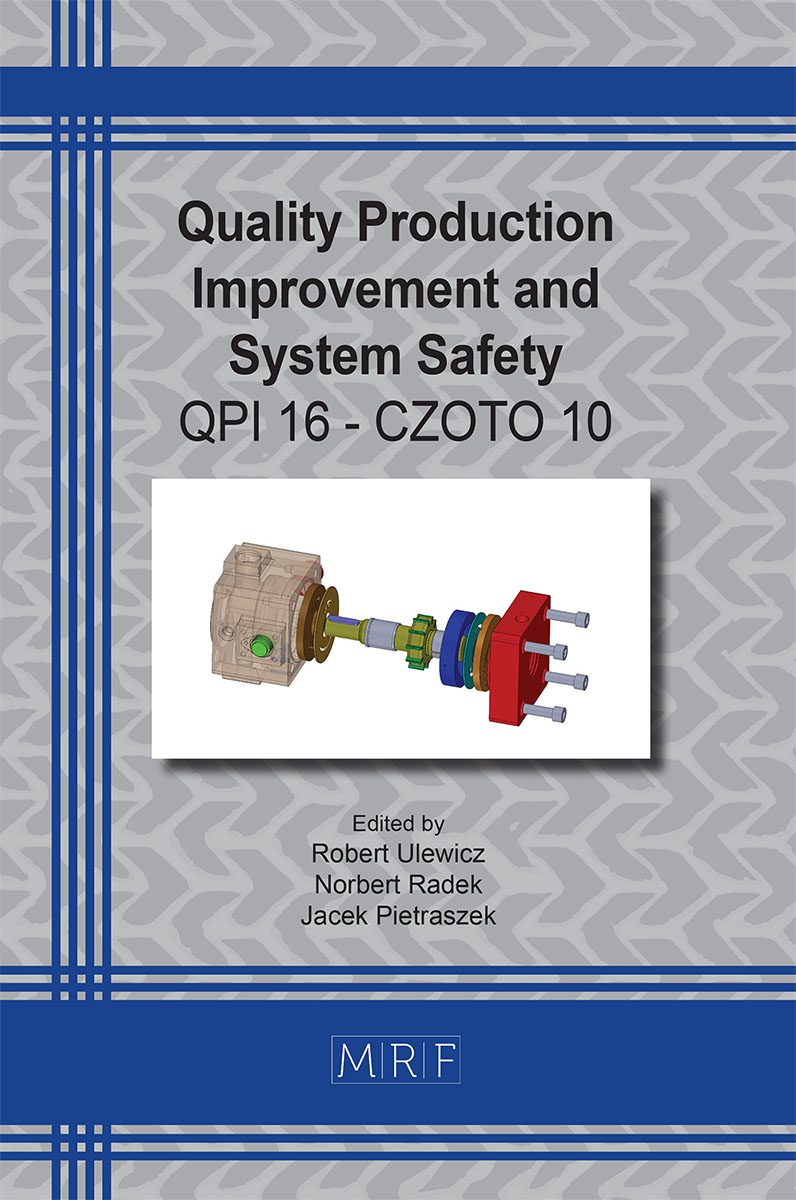The Use of Dispersed Plastic Reinforcement in Concrete
HELBRYCH Paweł
download PDFAbstract. The article deals with the issue of the usefulness of plastic reinforcement dispersed in concrete, including polypropylene fibers, and the impact of the amount of dosing of such fibers was assessed. The amount of addition was analyzed in the range of 0.5 to 2.0 kg/m3. Fibrillated fibers arranged in bundles and crimped fibers were used in the tests. Fibers with a length of 50 mm were analyzed. The results were compared with test series with the addition of steel barbed fibers 50 mm long and 1.0 mm in diameter. The tests showed that steel fibers do not adversely affect the designed consistency of the concrete mix, unlike polypropylene fibers. The tests showed that, for strength and technological reasons, in the case of concrete reinforced with the addition of up to 20 kg/m3 of steel fibers, polypropylene fibers in the amount of 1.5 kg/m3 can be successfully used, with a decrease in bending and compressive strength not exceeding 10%.
Keywords
Polypropylene Fibers, Steel Fibres, Fiber-Reinforced Concrete, Concrete, Mechanical Properties
Published online 9/1/2023, 8 pages
Copyright © 2023 by the author(s)
Published under license by Materials Research Forum LLC., Millersville PA, USA
Citation: HELBRYCH Paweł, The Use of Dispersed Plastic Reinforcement in Concrete, Materials Research Proceedings, Vol. 34, pp 146-153, 2023
DOI: https://doi.org/10.21741/9781644902691-18
The article was published as article 18 of the book Quality Production Improvement and System Safety
![]() Content from this work may be used under the terms of the Creative Commons Attribution 3.0 license. Any further distribution of this work must maintain attribution to the author(s) and the title of the work, journal citation and DOI.
Content from this work may be used under the terms of the Creative Commons Attribution 3.0 license. Any further distribution of this work must maintain attribution to the author(s) and the title of the work, journal citation and DOI.
References
[1] J. Prasalska-Nikoniuk et al. ISO 9001:2015 vs. Factory Production Control (FPC) to ensure the quality of construction products used in road and bridge engineering, BoZPE. 11 (2022) 103–111. https://doi.org/10.17512/bozpe.2022.11.12
[2] L. Osnovina, I. Maltsevich. Assessment of innovative solutions and risks of development in the construction industry, BoZPE. 10 (2021) 7-14. https://doi.org/10.17512/bozpe.2021.2.01
[3] N. Brycht. Construction Waste Management in Rural Areas of the Czestochowa District in the Aspect of Environmental Safety, QPI 2 (2020) 60-68. https://doi.org/10.2478/cqpi-2020-0008
[4] J. Popławski. Influence of biomass fly ash blended with bituminous coal fly ash on the properties of concrete, BoZPE 9 (2020) 89-96. https://doi.org/10.17512/bozpe.2020.1.10
[5] T. Lis, K. Nowacki. Pro-ecological possibilities of using metallurgical waste in the production of aggregates, Prod. Eng. Arch. 28 (2022) 252-256. https://doi.org/10.30657/pea.2022.28.31
[6] B. Dębska, J. Krasoń. The evaluation of the possible utilization of waste glass in sustainable mortars, BoZPE 10 (2020) 7-15. https://doi.org/10.17512/bozpe.2020.2.01
[7] A. Pietrzak. Ocena wpływu recyklatów z butelek pet na wybrane właściwości betonu, BoZPE 7 (2018) 51-56. https://doi.org/10.17512/bozpe.2018.1.07
[8] M. Ulewicz, A. Pietrzak. Properties and Structure of Concretes Doped with Production Waste of Thermoplastic Elastomers from the Production of Car Floor Mats, Materials 14 (2021) art. 872. https://doi.org/10.3390/ma14040872
[9] J. Jura, M. Ulewicz. Assessment of the Possibility of Using Fly Ash from Biomass Combustion for Concrete, Materials. 14 (2021) 6708. https://doi.org/10.3390/ma14216708
[10] N. Makul. Principles of Fiber-Reinforced Concrete, in: N. Makul (Ed.), Principles of Cement and Concrete Composites, Springer, 2021, 79–98. https://doi.org/10.1007/978-3-030-69602-3_4
[11] PN-EN 14889-1:2007 Włókna do betonu – Część 1: Włókna stalowe – Definicje, wymagania i zgodność, (n.d.).
[12] PN-EN 14889-2:2007 Włókna do betonu – Część 2: Włókna polimerowe – Definicje, wymagania i zgodność, (n.d.).
[13] M.R. Latifi et al. Effect of the addition of polypropylene fiber on concrete properties, J. Adhes. Sci. Technol. 36 (2022) 345-369. https://doi.org/10.1080/01694243.2021.1922221
[14] M. Glinicki. Beton ze zbrojeniem strukturalnym, in: Proc. XXV WPPK Szczyrk, Poland, 2010, 279 308. [online; viewed: 2023-01-31] Available from: https://www.ippt.pan.pl/repository/open/o70.pdf
[15] Z. Jamroży. Beton i jego technologie, PWN, Warszawa, 2020. ISBN 978-8301182106
[16] A. Bentur, S. Mindess. Fibre reinforced cementitious composites, CRC Press, London, 2019. ISBN 978-0429177293
[17] G.A. Pikus. Steel Fiber Concrete Mixture Workability, Procedia Eng. 150 (2016) 2119-2123. https://doi.org/10.1016/j.proeng.2016.07.250
[18] T.M.D. Do, T.Q.K. Lam. Design parameters of steel fiber concrete beams, Mag. Civ. Eng. 102 (2021) 10207-10207. https://doi.org/10.34910/MCE.102.7
[19] PN-EN 12350-2:2019-07 – Badania mieszanki betonowej – Część 2: Badanie konsystencji metodą opadu stożka, (n.d.).
[20] PN-EN 12390-1:2021-12 – Badania betonu – Część 1: Kształt, wymiary i inne wymagania dotyczące próbek do badań i form, (n.d.).
[21] PN-EN 12390-2:2019-07 – B dania betonu – Część 2: Wykonywanie i pielęgnacja próbek do badań wytrzymałościowych, (n.d.).
[22] PN-EN 12390-3:2019-07 – Badania betonu – Część 3: Wytrzymałość na ściskanie próbek do badań, (n.d.).
[23] PN-EN 12390-5 – Badania betonu – Część 5: Wytrzymałość na zginanie próbek do badań, (n.d.).
[24] PN-EN 12390-4:2020-03 – Badania betonu – Część 4: Wytrzymałość na ściskanie – Wymagania dla maszyn wytrzymałościowych, (n.d.).












